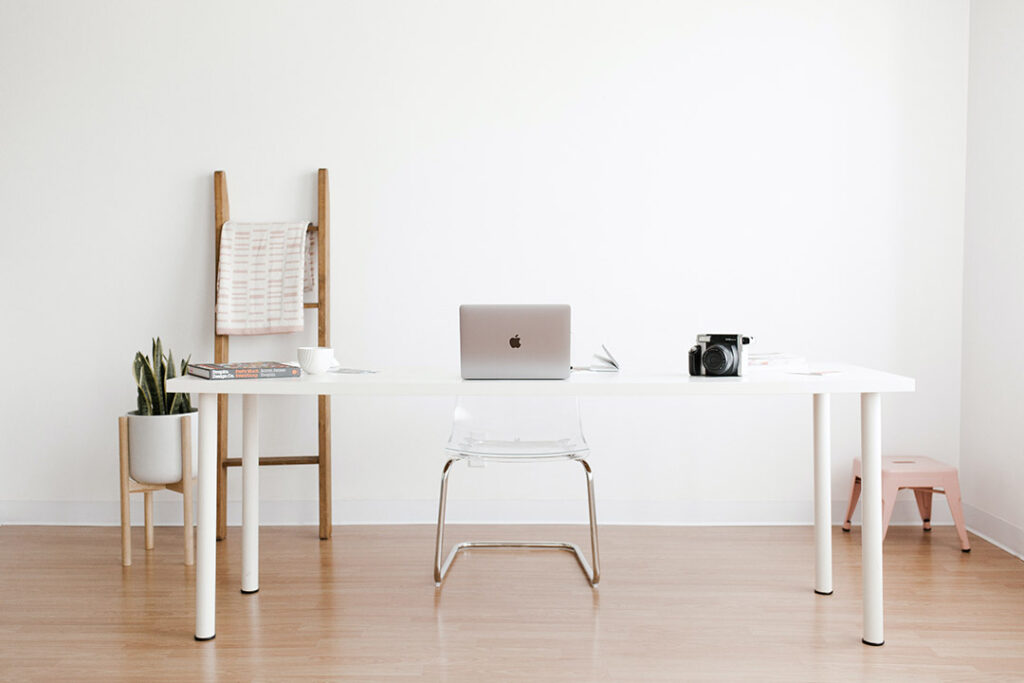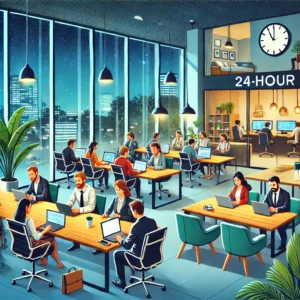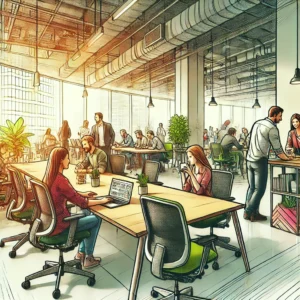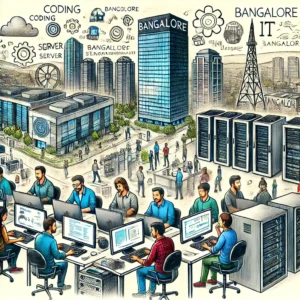Discover the future of office design with 27 innovative trends shaping modern workspaces, boosting productivity, and fostering employee well-being in our comprehensive guide.
In recent years, the way we work has undergone a rapid transformation, driven by advances in technology, shifts in demographics, and changes in employee expectations. The future of office design is evolving to keep pace with these changes and provide workplaces that are more efficient, flexible, and engaging. As we look ahead, there is no doubt that innovative trends will continue to shape how we design and use office spaces. Understanding these trends and incorporating them into your office design can help you create an environment that fosters productivity, collaboration, and well-being, while positioning your organization for long-term success.
The COVID-19 pandemic has further accelerated the need for innovative office design solutions. With remote work becoming the norm for many companies, the need for adaptable and hybrid office spaces has never been more evident. As a result, organizations must consider how they can create workplaces that facilitate both remote and in-person work, while still providing a sense of community and connection. This new era of office design presents exciting opportunities to redefine the workspace and create environments that support the diverse needs of today’s workforce.
In this blog post, we will delve into the future of office design, exploring 27 innovative trends that are shaping the way we work. From biophilic design and technology integration to flexible workspaces and wellness-centered amenities, these trends offer a glimpse into the office of the future. We will provide relevant examples to illustrate how organizations can leverage these trends to create office spaces that foster innovation, collaboration, and employee satisfaction.
Whether you are a business owner, manager, architect, or interior designer, understanding these emerging trends can help you make informed decisions about the design of your office space. By embracing the future of office design, you can create a workplace that not only supports the needs of your employees but also helps your organization stay ahead of the curve in a rapidly changing world.
27 Key Tips with Relevant Examples:
- Biophilic Design: Incorporate elements of nature into your office space to improve well-being and productivity. Examples include living walls, natural materials, and ample natural light. Google’s London headquarters, for instance, features a rooftop garden and naturalistic design elements throughout.
- Flexible Workspaces: Design spaces that can be easily reconfigured to support different types of work, such as collaboration, focus, and relaxation. Steelcase’s Flex Collection, for example, offers a range of modular furniture options that can be adapted to different needs.
- Technology Integration: Seamlessly incorporate technology into the office environment to support remote work, collaboration, and communication. Cisco’s Webex Rooms, for instance, provide video conferencing capabilities and interactive whiteboards for seamless collaboration.
- Acoustic Solutions: Address noise concerns with acoustic panels, soundproofing materials, and zoning strategies that minimize distractions. For example, the open office at Deloitte’s Amsterdam headquarters features a variety of sound-absorbing materials and designated quiet zones.
- Activity-Based Working: Design spaces that support a variety of work styles and tasks, including individual focus, group collaboration, and socialization. Microsoft’s Redmond campus, for instance, offers a range of work environments for employees to choose from based on their needs.
- Ergonomic Furniture: Invest in adjustable desks, chairs, and other furniture to promote proper posture and reduce the risk of injury. Herman Miller’s Aeron chair, for example, has become a standard in ergonomic office seating.
- Wellness Amenities: Incorporate amenities that support physical and mental well-being, such as fitness centers, meditation rooms, and healthy food options. Salesforce Tower in San Francisco, for example, includes a dedicated “mindfulness zone” for employee relaxation and meditation.
- Air Quality and Ventilation: Prioritize indoor air quality and ventilation systems to create a healthier work environment. The WELL Building Standard, for instance, offers guidelines for improving air quality in office spaces.
- Smart Lighting: Implement adjustable lighting systems that respond to natural light levels and user preferences. Philips Hue’s smart lighting solutions, for example, can be customized to create optimal lighting conditions for various tasks and moods.
- Sustainability: Incorporate sustainable materials and energy-efficient systems to reduce your office’s environmental impact. The Bullitt Center in Seattle, for example, is a net-zero energy building that uses solar panels and rainwater harvesting systems.
- Collaborative Spaces: Design dedicated areas for group work and brainstorming, equipped with comfortable seating and technology tools. Airbnb’s headquarters in San Francisco features several collaboration areas with flexible furniture and technology options.
- Private Workspaces: Provide quiet, private areas for employees to focus on individual tasks without distractions. The Headspace app, for example, offers a library of guided meditations and mindfulness exercises to help employees find focus and reduce stress.
- Sit-Stand Desks: Offer adjustable sit-stand desks that allow employees to switch between sitting and standing throughout the day. Varidesk’s ProDesk 60 Electric, for example, provides an easy-to-use sit-stand solution.
- Customizable Workstations: Allow employees to personalize their workstations with adjustable monitors, storage, and other accessories. Knoll’s Antenna Workspaces, for example, offer a range of customizable components to create tailored workstations.
- Touchless Technology: Minimize physical touchpoints in the office by incorporating touchless technology, such as automatic doors, voice-activated systems, and gesture-controlled devices. For example, Amazon’s Alexa for Business enables voice-activated control of various office functions.
- Outdoor Workspaces: Create outdoor spaces that support work and relaxation, such as rooftop terraces, gardens, and patios. Facebook’s Menlo Park campus, for instance, features a rooftop garden with Wi-Fi connectivity and outdoor seating.
- Multi-Purpose Spaces: Design spaces that can be easily adapted for various uses, such as meetings, events, and presentations. The Steelcase Flex Collection, for example, offers modular furniture that can be reconfigured for different purposes.
- Agile Workspaces: Create environments that support agile working methodologies, including open collaboration areas, team huddle spaces, and project rooms. Spotify’s Stockholm headquarters, for instance, features a range of agile workspaces designed to support collaboration and innovation.
- Art and Branding: Incorporate artwork and branding elements that reflect your organization’s culture and values. Etsy’s Brooklyn headquarters, for example, showcases artwork and products created by Etsy sellers.
- Wayfinding and Signage: Implement clear, visually appealing wayfinding systems and signage to help employees and visitors navigate your office space. Gensler’s office in Washington, D.C., for example, uses bold graphics and color-coded signage to guide occupants through the space.
- Inclusivity and Accessibility: Design spaces that accommodate the needs of all employees, including those with disabilities. For example, Google’s London headquarters features wheelchair-accessible workstations and meeting rooms equipped with assistive technology.
- Resimercial Design: Blend residential and commercial design elements to create comfortable, home-like environments. WeWork’s coworking spaces, for example, often feature plush seating, warm lighting, and residential-style décor.
- On-Site Childcare: Provide on-site childcare facilities to support employees with young children. Patagonia’s headquarters in Ventura, California, includes an on-site childcare center that offers programs for children aged two months to eight years.
- Pet-Friendly Policies: Allow employees to bring their pets to work, or provide dedicated pet-friendly areas. Amazon’s Seattle campus, for instance, includes a dog park and numerous dog-friendly spaces throughout the office.
- Communal Dining Spaces: Create inviting communal dining areas that encourage employees to interact and socialize during meals. Apple Park, the company’s headquarters in Cupertino, California, features a spacious cafeteria with a variety of seating options for employees to gather and connect.
- Digital Detox Zones: Establish designated areas within the office where employees can take breaks from technology and screens. Google’s New York City office, for example, offers a digital detox zone where employees can unplug and unwind.
- Remote Work Support: Design spaces and provide resources that support employees working remotely, such as dedicated remote workstations and teleconferencing technology. Zoom Video Communications, for instance, offers a range of teleconferencing solutions that enable remote employees to stay connected and engaged with their colleagues.
As we look towards the future of office design, it is clear that innovative trends will continue to shape the way we work and interact with our environments. The integration of technology, wellness, and flexibility are crucial elements in creating office spaces that not only adapt to the needs of today’s workforce but also foster a sense of community, innovation, and productivity.
By understanding and embracing these 27 key trends, organizations can create dynamic and engaging workspaces that support the diverse needs of their employees. In doing so, they can position themselves for long-term success, attracting and retaining top talent while maintaining a competitive edge in an ever-evolving business landscape.
The future of office design is an exciting and transformative journey, and we are only just beginning to explore the potential of these emerging trends. By staying informed and adaptive, we can create workspaces that are not only functional and efficient but also promote well-being, collaboration, and inspiration for years to come.
Did you know? Businesses like to use our coworking space in Bangalore.
Learn about our office space in Bangalore on YouTube




